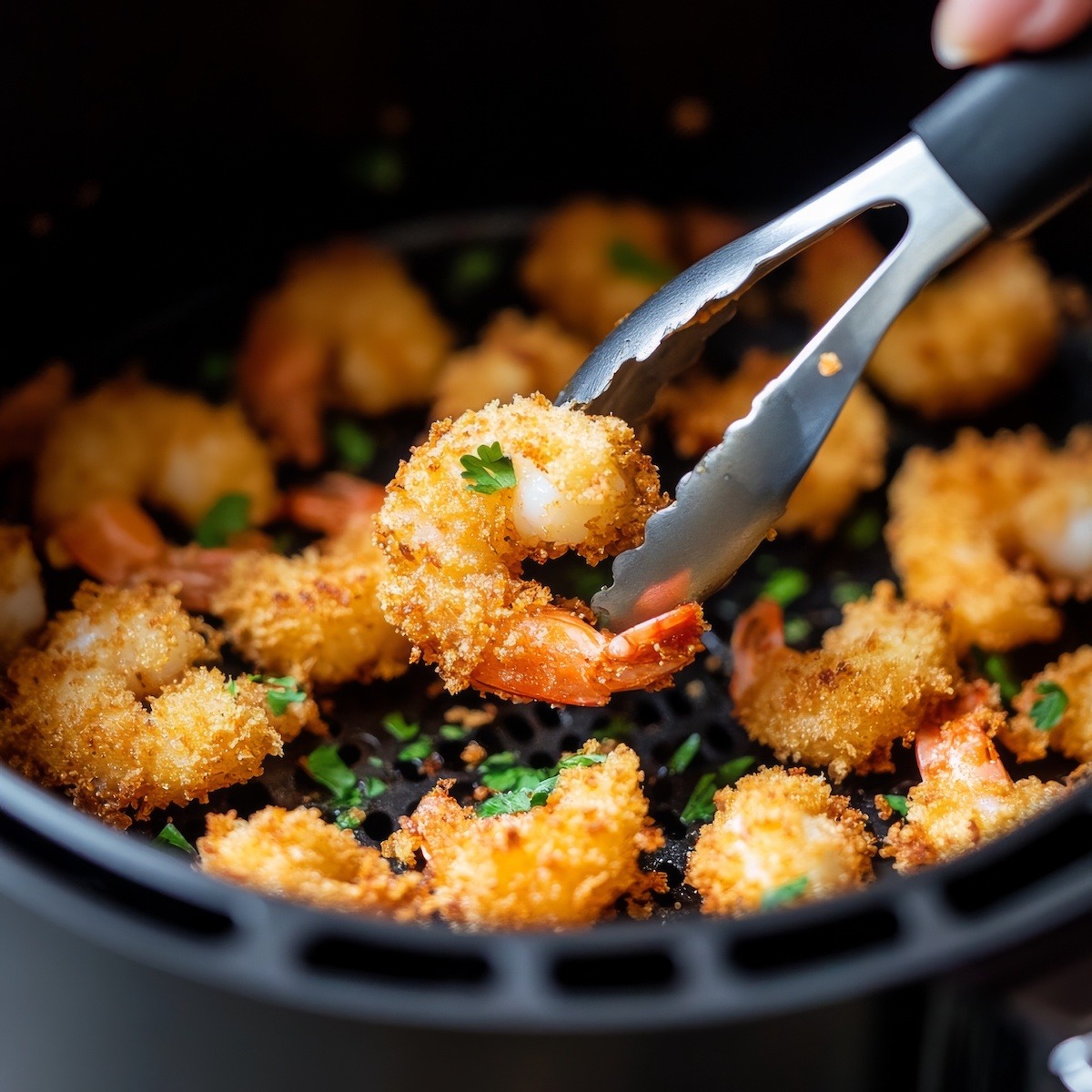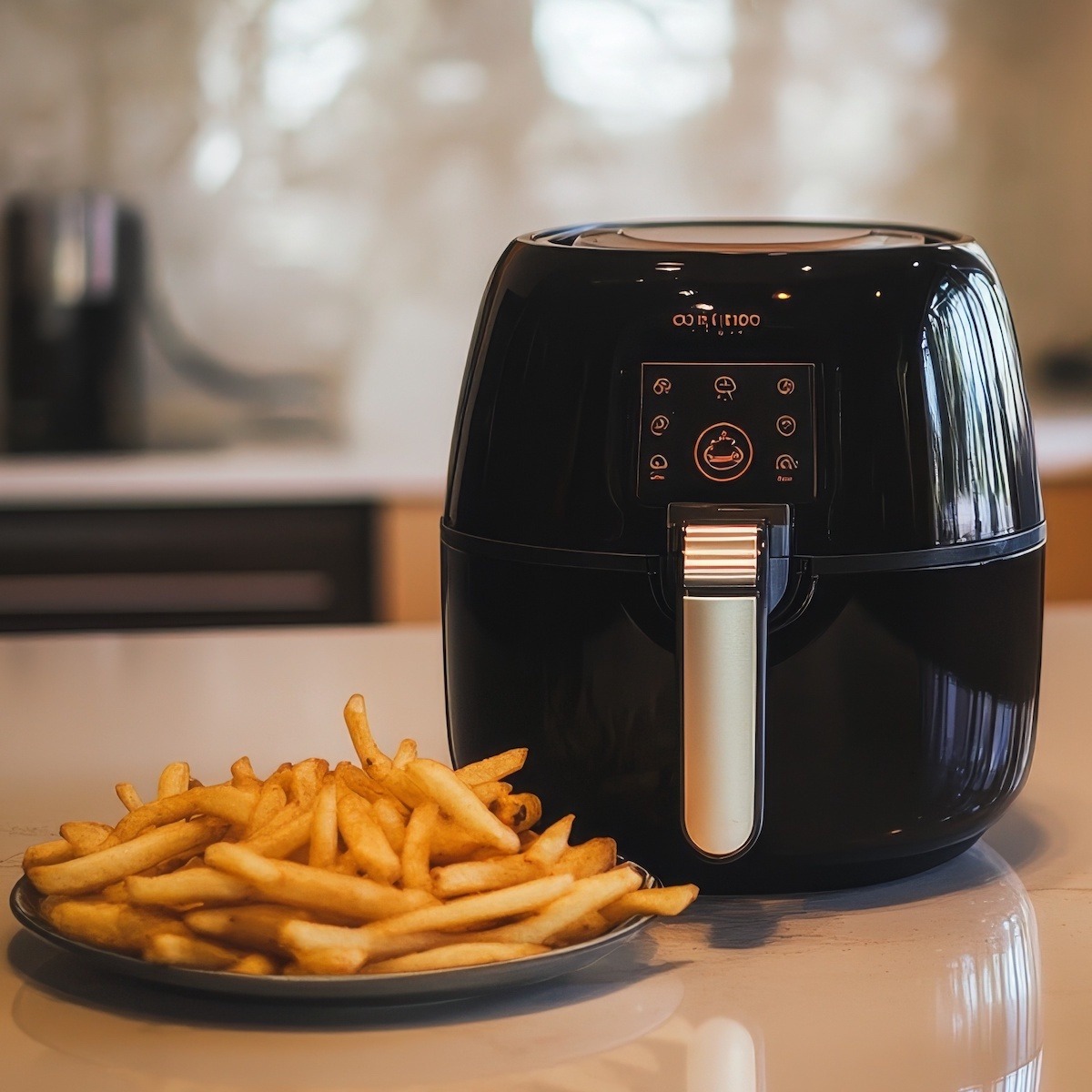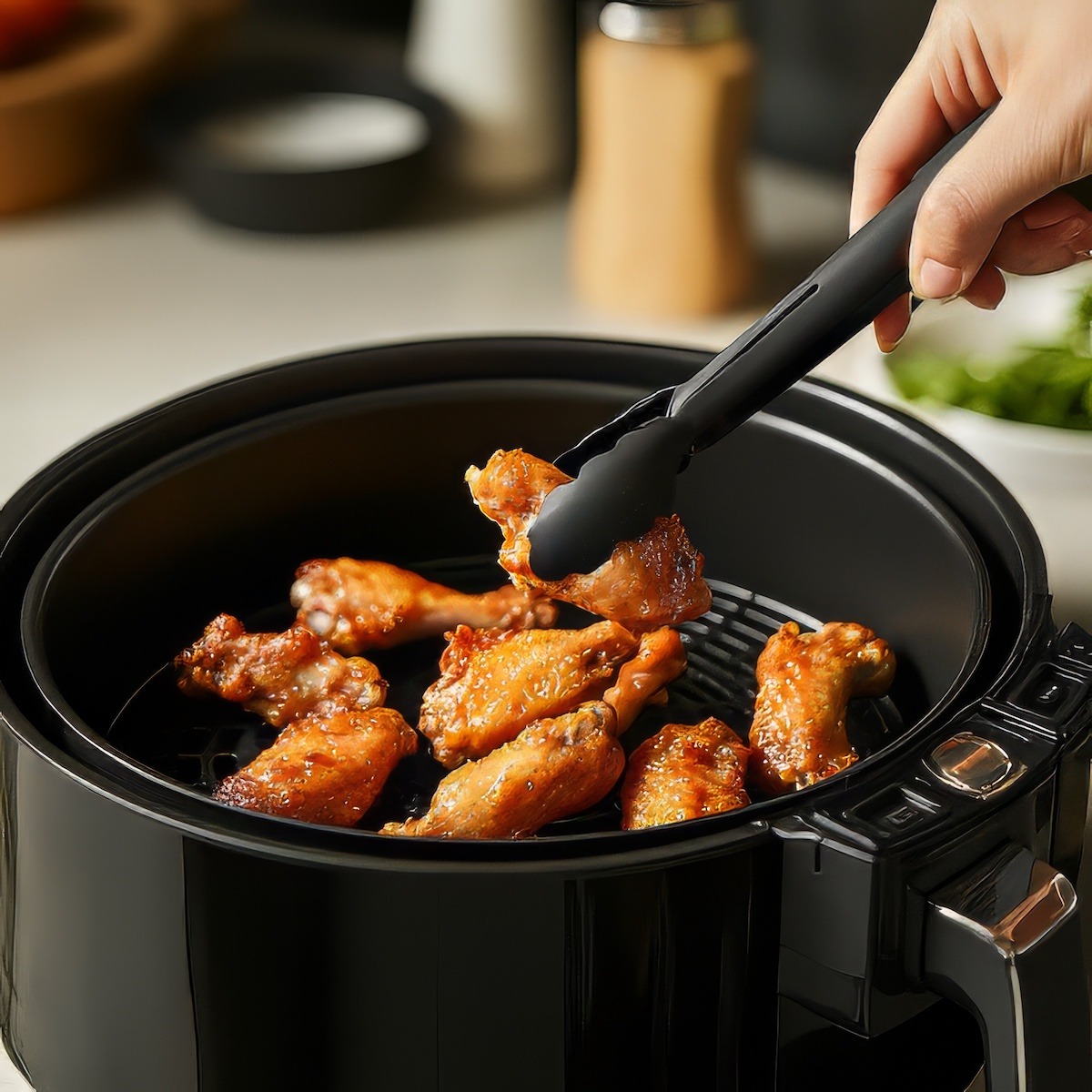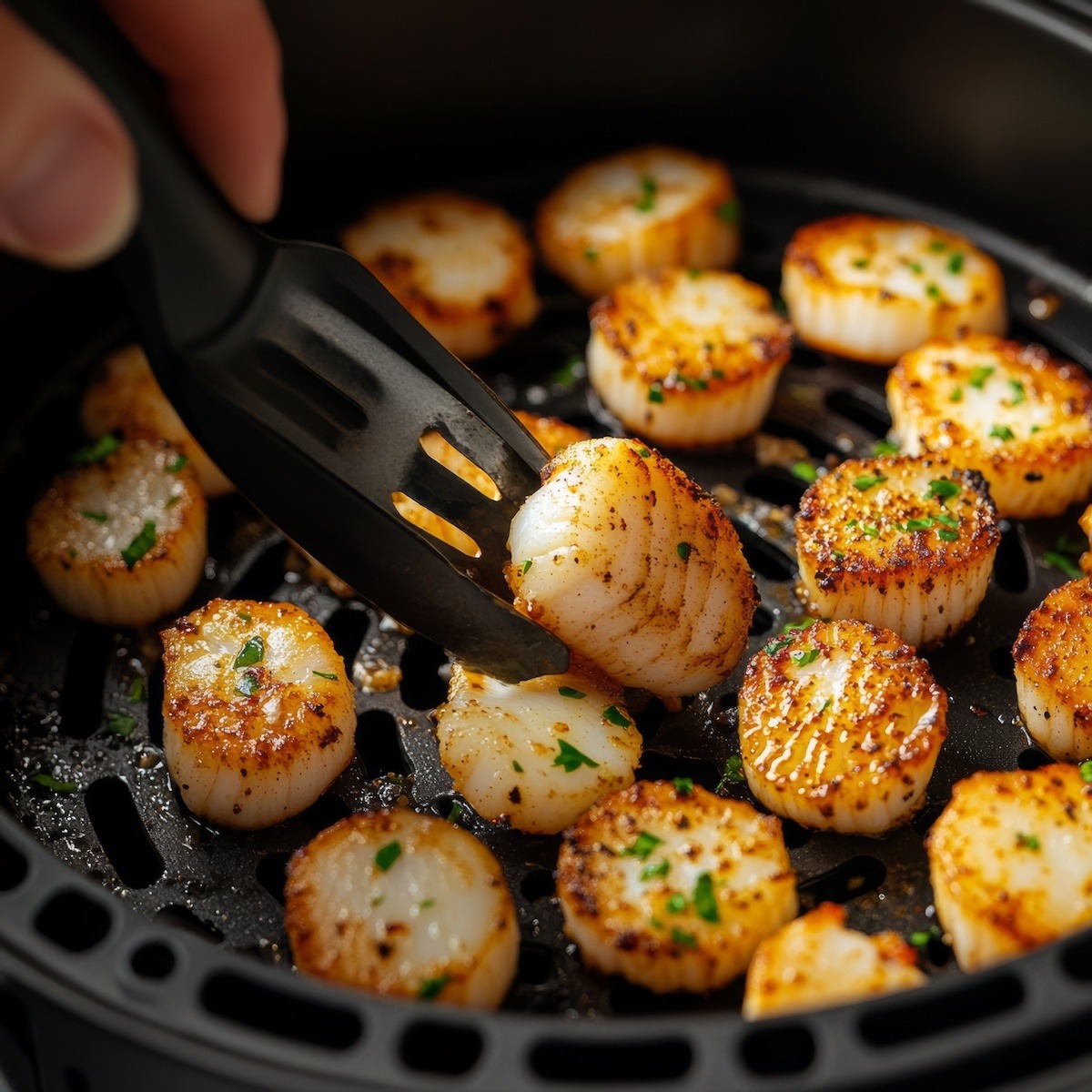

Air Fryer 101: Your Guide to Healthy, Quick, and Delicious Cooking
As a baby boomer dad with a longstanding passion for kitchen gadgets, I’ve always looked for the latest innovations that promise to elevate my cooking game. From high-tech blenders to multi-functional cookers, my collection is a testament to my love for culinary tools. Yet, despite my enthusiasm, one gadget only partially captured my interest: the air fryer.
I struggled to grasp its purpose and was skeptical of its promises. How could a device that claimed to fry food without a drop of oil or butter possibly deliver the crispy, golden results that traditional frying achieved?
My skepticism was rooted in the belief that frying inherently required oil or fat to produce that satisfying crunch. The air fryer seemed too good to be true—a kitchen appliance that could offer the taste and texture of fried foods while using significantly less fat.
It wasn’t until my oldest daughter, a culinary enthusiast in her own right, decided to put her air fryer to the test that my doubts began to wane. Her experiments with the air fryer were nothing short of impressive.
From crispy fries to succulent chicken wings, the results were consistently delicious and surprisingly close to traditional frying in texture and flavor. Observing her success, I couldn’t help but be intrigued. The air fryer was no longer just another kitchen gadget but a tool that delivered on its promises in ways I had never anticipated.
In this article, I’ll dive into the world of air fryers, sharing how this once-misunderstood appliance transformed my cooking perspective and became an indispensable part of my kitchen. Whether you’re a gadget lover like me or simply curious about the air fryer’s hype, join me as we explore its benefits and potential to revolutionize your culinary creations.
What Exactly Is An Air Fryer?
An air fryer is a kitchen appliance designed to cook food by circulating hot air around it, creating a crispy exterior similar to deep-fried foods but with significantly less oil. Here’s a closer look at how it works and what makes it unique:
How It Works
- Heating Element: The air fryer’s heating element generates high temperatures, usually between 350°F and 400°F (175°C and 200°C).
- Fan: A powerful fan circulates the hot air rapidly around the food. This constant airflow ensures even cooking and promotes browning.
- Cooking Basket: Food is placed in a basket with perforations, allowing the hot air to reach all sides. The basket design helps excess fat drip away from the food, making it healthier than traditional frying.
Key Features
- Less Oil: Unlike deep frying, which requires submerging food in hot oil, an air fryer uses only a tiny amount of oil (or none at all) to achieve a crispy texture. Some models even feature a “no oil” setting for certain foods.
- Versatility: Air fryers can be used for various cooking methods, including frying, baking, roasting, and grilling. This makes them versatile appliances for preparing a wide range of dishes.
- Speed and Efficiency: Rapid hot air circulation often means cooking times are shorter than in conventional ovens. Additionally, air fryers preheat quickly, saving time in the kitchen.
Benefits
- Healthier Cooking: By using less oil, air fryers can help reduce the fat content in your meals while still delivering a crispy texture.
- Convenience: Many air fryers come with presets for common foods like fries, chicken, and fish, making it easy to achieve consistent results with minimal effort.
- Ease of Cleaning: Most air fryer baskets and trays are non-stick and dishwasher-safe, making cleanup straightforward.
An air fryer offers a modern twist on traditional frying. It uses hot air to create a crispy finish without excessive amounts of oil, making it a popular choice for health-conscious cooks and busy households.

History
The history of the air fryer is a fascinating journey through culinary innovation and technology. Here’s a chronological overview of how this modern kitchen appliance came to be:
Early Concepts and Development
- 1950s-1970s: Early Frying Technology
- The concept of using hot air to cook food can be traced back to the development of convection ovens, which utilize a fan to circulate hot air for more even cooking. While these early ovens did not create the same crispy texture as air fryers, they laid the groundwork for the technology.
- 1980s: Introduction of Rapid Air Technology
- The concept of “rapid air technology,” which is fundamental to air fryers, was pioneered by Dutch inventor Fred van der Weij. Van der Weij, working with Philips, developed a method to cook food using hot air circulated at high speeds. This technology aimed to replicate the crispy texture of fried foods without using large amounts of oil.
The Air Fryer Emerges
- 2005: Patent and Initial Development
- Fred van der Weij patented his air frying technology in 2005. Philips, a leading electronics company, saw the potential and began developing a commercial product based on his invention. The focus was on creating a healthier alternative to traditional frying methods.
- 2010: First Commercial Air Fryer
- In 2010, Philips introduced the first commercial air fryer, the “Philips Airfryer,” to the market. This model utilized rapid air technology to cook food with minimal oil. The product received significant attention for its promise of healthier frying and quickly became popular among consumers.
Growth and Popularity
- 2010s: Expansion and Innovation
- Following the success of the Philips Airfryer, other manufacturers entered the market with their versions of air fryers. The appliance underwent various innovations, including improved designs, additional cooking functions, and user-friendly features.
- Late 2010s-2020s: Mainstream Adoption
- By the late 2010s and early 2020s, air fryers had become a staple in many households. Their popularity surged due to their versatility, ease of use, and the growing trend towards healthier eating. Manufacturers continued to enhance their designs, offering features such as digital controls, preset cooking programs, and larger capacities.
Recent Developments
- 2020s: Continued Evolution
- Air fryers continue to evolve with technological advancements, energy efficiency, and multifunctionality. Modern air fryers often include additional cooking modes like roasting, baking, and grilling, making them even more versatile.
The air fryer’s journey from a concept developed in the early 2000s to a widely embraced kitchen appliance reflects a broader trend toward healthier and more convenient cooking solutions. Its evolution highlights the ongoing innovation in kitchen technology and its impact on modern culinary practices.

Air Fryer Chicken Wings
What Can You Cook in an Air Fryer?
An air fryer is a versatile kitchen appliance that can handle various foods, making it a popular choice for quick meals and elaborate dishes. Here’s a comprehensive list of what you can cook in an air fryer:
1. Fried Favorites
- French Fries: Classic air fryer fare, crispy on the outside and tender on the inside.
- Chicken Wings: Perfectly crisp and flavorful without needing to deep-fry.
- Onion Rings: Golden and crunchy, with a fraction of the oil used in traditional recipes.
- Nuggets: Both store-bought and homemade chicken nuggets are crispy and delicious.
2. Vegetables
- Roasted Vegetables: Carrots, bell peppers, zucchini, and more can be perfectly roasted with minimal oil.
- Brussels Sprouts: Air-fried Brussels sprouts become crispy and caramelized.
- Sweet Potatoes: Sweet potato fries or cubes become tender and crisp in the air fryer.
3. Meats
- Chicken Breasts: Juicy on the inside with a crispy exterior.
- Pork Chops: Cooked to a perfect golden-brown crust.
- Steak: Air fryers can produce a nicely seared steak with a tender inside.
4. Seafood
- Shrimp: Lightly breaded shrimp cook quickly and evenly, maintaining a juicy center.
- Fish Fillets: Air fryers can cook fish to a crispy finish without deep frying.
5. Baked Goods
- Cookies: Small batches of cookies can be baked quickly in the air fryer.
- Muffins: Air fryers can bake muffins with a tender crumb and golden top.
- Cinnamon Rolls: Homemade or pre-made, these can be air-fried for a quick and delicious treat.
6. Snacks
- Popcorn: Air fryers can make popcorn without the need for oil.
- Chips: Homemade potato or vegetable chips are easily made in an air fryer.
- Pretzels: Crisp up store-bought or homemade pretzels for a quick snack.
7. Frozen Foods
- Frozen Fries: Cook from frozen for a quick, crispy side dish.
- Frozen Dumplings: These cook quickly and become crispy without boiling.
- Frozen Pizza Rolls: A fast way to prepare these popular snacks.
8. Healthy Alternatives
- Tofu: Air-fried tofu becomes crispy on the outside while remaining tender inside.
- Falafel: A healthier way to enjoy this Middle Eastern favorite.
- Chickpeas: Seasoned and air-fried chickpeas make for a crunchy, nutritious snack.
9. Breakfast Items
- Eggs: You can make hard-boiled eggs or even scramble eggs in an air fryer.
- Bacon: Crisps up nicely and drains excess fat.
10. Reheated Foods
- Leftovers: Air fryers are great for reheating pizza, fries, and other foods, keeping them crispy rather than soggy.
Tips for Air Frying:
- Preheat: Some air fryers benefit from a preheating period for optimal results.
- Don’t Overcrowd: For the crispiest results, avoid overcrowding the basket to allow for even air circulation.
- Shake or Flip: For even cooking, shake the basket or flip items halfway through cooking.
This is a versatile tool that can handle various cooking tasks, from making healthy meals and snacks to baking treats and reheating leftovers. Its ability to achieve a crispy texture with less oil makes it a favorite among health-conscious cooks and busy families.
Air Fryer Advantages
Air fryers have gained popularity due to their ability to cook various foods with minimal oil while achieving a crispy, fried texture. Here are the key advantages of using an air fryer:
- Healthier Cooking: Air fryers use hot air circulation to cook food, requiring little to no oil. Compared to traditional deep-frying, this reduces the overall fat content of meals, making it a healthier option for those looking to reduce their calorie intake.
- Crispy Texture: Despite using less oil, air fryers can still produce a crispy outer layer similar to that of fried foods, thanks to the rapid air circulation and high heat.
- Faster Cooking Times: Air fryers typically cook food faster than conventional ovens due to the smaller cooking chamber and focused heat. This makes them a convenient option for quick meals.
- Versatility: Air fryers can be used for various cooking techniques, including frying, roasting, baking, and grilling. This makes them versatile kitchen appliances that can handle everything from French fries to baked goods.
- Easy Cleanup: Many air fryer models come with non-stick baskets and are dishwasher-safe, making cleanup more accessible than traditional frying, which involves hot oil.
- Energy Efficiency: Because air fryers cook food quickly and don’t require preheating for long periods, they can be more energy-efficient than conventional ovens, especially for smaller batches of food.
- Safety: Air fryers reduce the risk of accidents associated with traditional frying, such as oil splatters and burns. There’s no need to deal with large quantities of hot oil, making it a safer alternative.
Disadvantages
While air fryers offer many benefits, there are also some disadvantages to consider:
- Limited Capacity: Most air fryers have smaller cooking chambers than conventional ovens, making them less ideal for preparing large meals or cooking for a family all at once. You may need to cook in batches, which can be time-consuming.
- Texture and Flavor Differences: While air fryers can create a crispy texture, the results may only sometimes match the taste and texture of deep-fried food. Foods might not be as moist or evenly cooked as in traditional methods.
- Price: Air fryers can be relatively expensive compared to other kitchen appliances. High-quality models with more features may require a significant investment, which might not be justifiable if you own other versatile appliances.
- Space Consumption: Air fryers can be bulky, taking up valuable counter space in the kitchen. Finding a spot for one may be inconvenient for those with limited space.
- Learning Curve: While using an air fryer is generally straightforward, there can be a learning curve for cooking times and temperatures. Some trial and error might be necessary to get the desired results, which can be frustrating initially.
- Noise: Many air fryers are noisy during operation due to the fan circulating hot air. This noise can be a downside, especially if you prefer a quieter cooking environment.
- Single Functionality: Unlike multi-purpose appliances like Instant Pots or convection ovens, air fryers are limited in their functionality. Although they can roast, bake, and grill, their primary purpose is to replicate frying, which may be less versatile for some home cooks.
- Quality Variations: The quality of air fryers can vary significantly between brands and models. Some lower-end models may cook food sparingly or have durability issues, leading to inconsistent results.
Buying An Air Fryer
When buying an air fryer, there are several factors to consider, as they are all different. The differences between models can significantly impact your cooking experience. Here’s what to look for:
1. Capacity and Size
- Consider your needs: They come in various sizes, typically ranging from 2 to 8 quarts. A smaller 2-3 quart model is suitable for singles or couples, while larger 5-8 quart models are better for families or batch cooking.
- Counter space: Check the dimensions of the air fryer to ensure it fits your available counter or storage space.
2. Wattage and Power
- Cooking speed: Higher wattage (typically 1,200-2,000 watts) generally means faster cooking, but make sure your kitchen outlets can handle the power.
- Energy efficiency: Consider the energy consumption, especially if you plan to use it frequently.
3. Temperature Range
- Versatility: Look for an air fryer with a wide temperature range (e.g., 180°F to 400°F or higher). This allows you to cook various dishes, from delicate items like vegetables to crispier foods like fries and chicken wings.
4. Preset Cooking Programs
- Convenience: Some air fryers have preset cooking programs for common foods like fries, chicken, fish, and baked goods. These can be useful for beginners or those looking for quick meal prep, but more experienced cooks may prefer manual controls.
5. Ease of Use
- Controls: Check whether it has digital or manual controls. Digital touchscreens offer precise settings and timers, while manual dials can be more straightforward to operate.
- User interface: Make sure the controls are intuitive and easy to navigate.
6. Accessories
- Included extras: Look for air fryers with additional accessories like baking pans, skewers, or racks. These can increase the appliance’s versatility.
- Compatibility: Ensure that replacement parts and accessories are readily available if needed.
7. Cleaning and Maintenance
- Non-stick coating: Choose an air fryer with non-stick baskets or trays for easier cleaning.
- Dishwasher-safe parts: Many air fryers have dishwasher-safe parts, which can save time on cleanup.
8. Build Quality and Durability
- Materials: Check the air fryer’s build quality. Stainless steel models are more durable than plastic ones.
- Brand reputation: Consider the brand’s reputation and look for customer reviews to gauge reliability and performance over time.
9. Noise Level
- Quiet operation: Some air fryers can be noisy due to their fan. If noise is a concern, look for reviews that mention quiet operation.
10. Price
- Budget: Prices for air fryers can range from $50 to over $300, depending on features, size, and brand. Determine your budget and compare features to get the best value for your money.
11. Warranty and Support
- Warranty: A good warranty (usually 1-2 years) can provide peace of mind.
- Customer service: Consider the quality of customer support and the ease of reaching the manufacturer if you encounter issues.
Air fryers are different, and the suitable model for you depends on your specific cooking needs, space, and budget.

Air Fryer Scallops
Learning New Tricks
Starting with simple, familiar recipes can help you get comfortable using your new appliance. Here are some beginner-friendly ideas:
1. French Fries
- Classic and easy, making fries will help you understand how your air fryer handles crisping and cooking times. Experiment with different cuts (thin, thick) and seasonings.
2. Chicken Wings
- Air fryer chicken wings are popular for achieving a crispy skin without frying in oil. Start with basic seasoning or a marinade and get a feel for cooking times.
3. Vegetables
- Roasted vegetables like broccoli, cauliflower, and Brussels sprouts are quick and delicious in the air fryer. Toss with olive oil and seasonings, and you’ll learn how the air fryer enhances texture and flavor.
4. Frozen Foods
- Cook frozen items like mozzarella sticks, chicken nuggets, or tater tots. These are pre-cooked, so you’ll only need to focus on crisping them up, making it a low-risk way to get used to your air fryer’s settings.
5. Chicken Breast
- A simple air fryer chicken breast with basic seasoning will help you gauge how the air fryer handles larger proteins. Keep an eye on the internal temperature for doneness.
6. Toasted Nuts
- Try roasting almonds, cashews, or peanuts. It’s a quick recipe; you’ll get a feel for how the air fryer manages smaller, lighter items.
7. Egg Rolls or Spring Rolls
- If you enjoy crispy snacks, air-fried egg rolls or spring rolls are a great way to experiment with different levels of crispiness and learn how the air fryer handles multi-layered foods.
8. Air-Fried Bacon
- Cooking bacon in the air fryer is easy and mess-free. It’s an excellent way to practice monitoring cooking progress without constantly flipping the food.
By starting with these simple recipes, you’ll gradually become more comfortable adjusting your air fryer’s time, temperature, and settings. Once you get the hang of it, you can move on to more complex dishes.
Foods to Stay Away From
While air fryers are versatile, some foods and techniques may need to be revised or could even damage the appliance. Here’s a list of things to stay away from when using your air fryer:
1. Wet Batter
- Foods with a wet batter, like tempura or beer-battered fish, won’t cook properly in an air fryer. The batter won’t set as it would in a deep fryer, leading to a soggy or uneven result. Instead, try coating food with breadcrumbs or a dry breading for a crispier texture.
2. Cheese
- Foods with lots of cheese, like grilled cheese sandwiches or cheesy appetizers, can melt and ooze out during cooking, creating a mess. Cheese can burn easily and stick to the basket, making cleaning difficult.
3. Overcrowding
- Avoid overfilling the basket. Air fryers rely on hot air circulation to cook food evenly. If the basket is too full, the food won’t cook properly or get crispy. Cook in batches if necessary to ensure even cooking.
4. Delicate Greens
- Leafy greens like spinach or kale can be tricky in an air fryer. They are light and can fly inside the basket, leading to uneven cooking or burning. If you want to make air-fried kale chips, it’s best to weigh the leaves down with a light coating of oil.
5. Rice, Grains, and Pasta
- Raw rice, grains, and pasta must be cooked in water or broth to absorb liquid and soften, which can’t be done in an air fryer. Stick to traditional methods like boiling or steaming, then use the air fryer to crisp them up if desired.
6. Whole Roasts
- While air fryers can handle minor cuts of meat, whole roasts like a large chicken or a full-sized roast may be too big for most air fryers. The size limitations mean the food may cook unevenly or not fit at all. Opt for smaller cuts or portioned meats.
7. Foods that Require Extra Liquids
- Any food that needs to be submerged in liquid for cooking, like soups, stews, or braises, isn’t suitable for an air fryer. Air fryers are designed for dry-heat cooking methods.
8. Toast
- Although convenient, toasting bread in an air fryer can dry it out too much or cook it unevenly. A regular toaster or oven is a better choice for making toast.
9. Highly Marbled Meats
- Meats with high-fat content, like ribeye steaks, may cause excessive smoking in the air fryer as the fat renders and drips into the bottom of the appliance. Opt for leaner cuts to avoid smoke and grease buildup.
10. Plastic or Non-Air-Fryer Safe Materials
- Never use plastic or any material not rated as air-fryer safe inside your air fryer. The high temperatures can melt plastic, cause toxic fumes, or ruin the appliance. Stick to metal, silicone, or air-fryer-safe accessories.
Avoiding these foods and practices will help you get the best results from your air fryer while keeping it in good condition.
How Fancy Can This Old Dad Get?
You can get surprisingly fancy with an air fryer! While air fryers are often associated with simple, quick meals, they can also be used for more sophisticated dishes. Here are some gourmet ideas to elevate your air fryer game:
1. Air-Fried Lamb Chops
- Season lamb chops with herbs, garlic, and olive oil, then air fry them to a perfect medium-rare. For an elegant dish, serve with a red wine reduction or a balsamic glaze.
2. Air-Fried Duck Breast
- Score the skin of a duck breast and season with salt and pepper. The air fryer can crisp the skin beautifully while keeping the meat juicy. Pair it with a cherry sauce or orange glaze for a refined touch.
3. Air-Fried Lobster Tails
- Butterflied lobster tails with a golden, buttery finish can be air-fried to perfection. Serve with garlic herb butter and a lemon wedge for a luxurious dinner.
4. Sous Vide Air-Fried Steak
- Combine sous vide cooking with air frying for a restaurant-quality steak. Cook the steak sous vide to the perfect temperature, then finish it in the air fryer to create a beautiful crust.
5. Air-Fried Stuffed Mushrooms
- Fill large mushrooms with cream cheese, herbs, and breadcrumbs, then air fry them until golden and bubbling. These make an impressive appetizer for guests.
6. Air-Fried Parmesan Truffle Fries
- Take regular fries to the next level by tossing them in truffle oil and freshly grated Parmesan after air frying. Serve them with aioli for a gourmet side dish.
7. Air-Fried Scallops
- Air fry sea scallops to achieve a crispy exterior while keeping the inside tender. Pair them with a citrus beurre blanc or a saffron aioli for a sophisticated presentation.
8. Air-Fried Arancini
- Make Italian rice balls (arancini) filled with mozzarella and risotto, then air-fried until golden. Serve with a rich tomato sauce for a stylish appetizer or main course.
9. Air-Fried Crab Cakes
- Whip up some gourmet crab cakes with fresh crab meat; then air fry them to get a crispy exterior. Serve with a remoulade sauce and a simple salad for an elegant seafood dish.
10. Air-Fried Chocolate Lava Cake
- Yes, you can even do dessert! Use the air fryer to bake individual chocolate lava cakes with a gooey center that oozes out when cut. Serve with fresh berries and a dusting of powdered sugar for an indulgent treat.
Experimenting with gourmet ingredients and techniques can transform your air fryer recipes from everyday to extraordinary.
Some of My Favorite Cookware
 Print
Print




